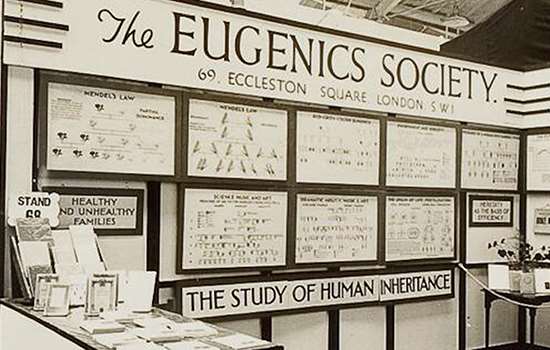GWYNNE-VAUGHAN, Dame Helen (1879-1967)
Plaque erected in 2020 by English Heritage at Flat 93, Bedford Court Mansions, Bloomsbury, London, WC1B 3AE, London Borough of Camden
All images © English Heritage
Profession
Botanist and Military Officer
Category
Armed Forces, Science
Inscription
HELEN GWYNNE-VAUGHAN 1879-1967 Botanist and leader of the first women’s army corps lived in flat 93 1915-1964
Material
Ceramic
Dame Helen Gwynne-Vaughan was a prominent English botanist and is recognised for her significant contributions to military and public service. She is commemorated with a blue plaque at Flat 93, Bedford Court Mansions in Bloomsbury – her London home for almost 50 years.
Early Years
Helen Gwynne-Vaughan was born Helen Charlotte Isabella Fraser in 1879. Born into an aristocratic and military family, her mother was the grand-daughter of a Scottish baronet and her father was captain of the Scots Guard. She attended Cheltenham Ladies College in 1895 and, like others of her social class at this time, became involved in clubs for working girls. In her youth Helen became convinced that young working-class women, held back by the social conventions of their class, benefitted from upper-class leadership – an attitude that was to inform her whole career.
Academic Career
Helen graduated from King’s College, London in 1904 with an honors degree in botany, and began an academic career in mycology – the study of fungi. In 1909 she became Head of the Botany Department at Birkbeck College, London. She married fellow academic David Thomas Gwynne-Vaughan in 1911 and continued to pursue her career, unlike many married women of her time.
After her husband’s sudden death in 1915, Gwynne-Vaughan moved into Flat 93 at Bedford Court Mansions, which was conveniently close to Birkbeck College at that time. The six-roomed flat was described as the ‘scene of constant business like activity’ and would remain her London home for almost 50 years. During this time she gained her professorship at Birkbeck (1921) becoming the college’s first female professor.
The Armed Forces
While living at Bedford Court Mansions, Gwynne-Vaughan also dedicated many years to public and military service. During World War I, she joined the Women’s Army Auxiliary Corps (WAAC) and was appointed Chief Controller of a small contingent that was posted in France. Her position was largely gained through her excellent connections, however Gwynne-Vaughan still had to prove herself as a capable leader at a time when many people had sceptical views towards women working with the army.
The WAAC expanded rapidly and in four and a half years about 40,000 women were enrolled. As a result of her success, Gwynne-Vaughan became the first woman to wear the insignia of a Military Commander of the Order of the British Empire in 1918. She was then transferred to become Commandant of the Women’s Royal Air Force (WRAF) later that year. In 1919, Gwynne-Vaughan was made a Dame Commander of the Order of the British Empire.
Later Life
At the end of 1919, Gwynne-Vaughan returned to civilian life and academia. However as the Second World War approached, the Auxiliary Territorial Service (ATS) – the women’s branch of the British Army – was formed, and Gwynne-Vaughan was appointed as Director in 1939. Her rank was equivalent to a major-general.
Gwynne-Vaughan reached retirement age in July 1941 and around the same time the ATS was given full military status, meaning its members were no longer volunteers – a major step in the direction of the equality for which Gwynne-Vaughan had fought.
In 1964, with her deteriorating health, Gwynne-Vaughan finally left Bedford Court Mansions and spent her final years at Sussexdown, a convalescent home run by the RAF association.
Nearby Blue Plaques
More about blue plaques
-

Eugenics in Britain
Find out more about the controversial and changing ideas about eugenics, and some of the figures with blue plaques who supported or opposed it.
-

Support the blue plaques scheme
Every blue plaque, from its research to unveiling, is funded by donations. Find out how you can help support the scheme.
-

Search for a Plaque
Use our search function to look for someone from history, or browse by category or location.